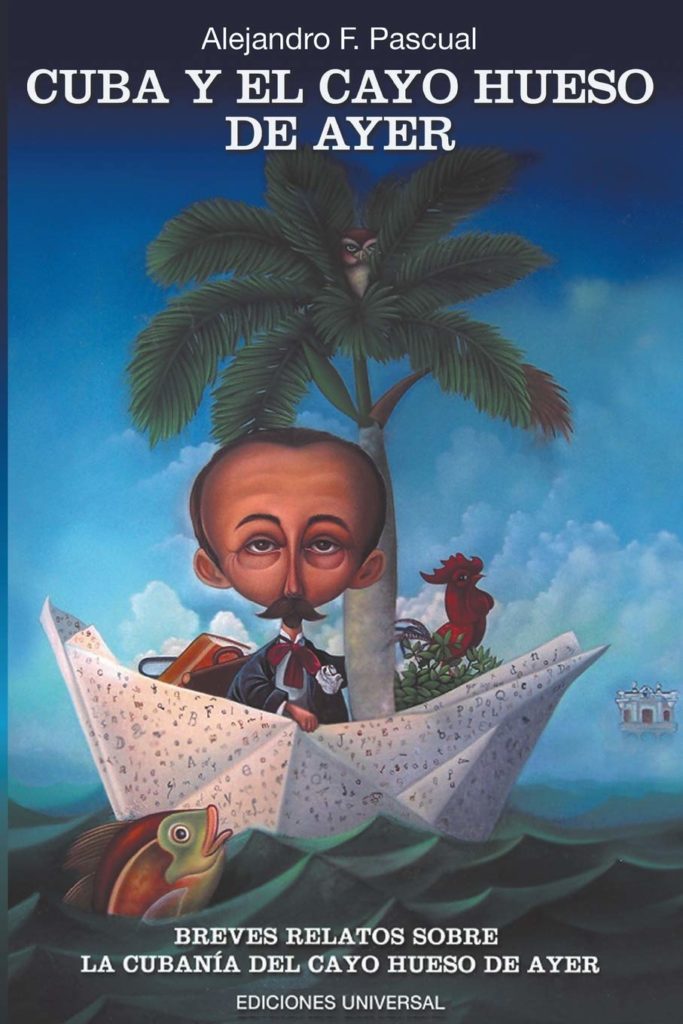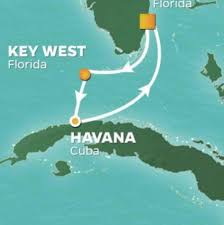 90 MILES FROM CUBA: CAYO HUESO (KEY WEST) IN ITS HISTORY. PHOTOS.
90 MILES FROM CUBA: CAYO HUESO (KEY WEST) IN ITS HISTORY. PHOTOS.
Cayo Hueso is the original name in Spanish for the island of Cayo Hueso or Key West, the closest point in the United States to Cuba. Spanish speakers today also use the term Cayo Hueso when referring to this island. It is said that the island was full of remains (bones) and that the island was the western key with a safe supply of water.
In pre-Columbian times, Key West was inhabited by the Calusa people. The first European to visit was Juan Ponce de León in 1521 when Florida became a Spanish territory, then a fishing and rescue town with a small garrison that settled here.
In 1815 the Spanish governor of Cuba in Havana transferred the island of Key West to Juan Pablo Salas, an officer of the Royal Spanish Armed Artillery, based in Saint Augustine, Florida. Salas was so eager to sell the island that he sold it twice.
Apparently, Key West was considered a legal part of Florida since when Spain ceded the peninsula to England, to end the occupation of Havana by the English, Key West was considered ceded, with the residents of the town in the Key being transferred to Havana.
England did not pay much attention to Key West and soon the Key began to be used by Cuban and Bahamian fishermen. As soon as the United States achieved its independence, some people from the new nation began to come to the Key. During these years no government exercised control or recognition over Key West.
By order of February 7, 1822, on March 25, 1822, Lieutenant Matthew C. Perry of the US Navy arrived in Key West on the Shark and planted the American flag claiming the key as the property of the United States. Perry proceeded to change the name to “Thompson’s Island” in honor of Secretary of the Navy Smith Thompson and named the port “Port Rodgers” in honor of John Rodgers, a hero of the war of 1812. Neither name remained, without However, Key West has remained the property of the United States to the present.
CAYO HUESO AT THE LATE XIX CENTURY.
In 1890, Key West had a population of about 18,800 and was the largest and richest city in Florida. Half of the residents said they were of Cuban origin, and Key West regularly had Cuban mayors, including the son of Carlos Manuel de Céspedes, the father of the Republic of Cuba, who was elected mayor in 1876. Cubans have actively participated in the development of 200 factories in the city, a production of 100 million cigars annually. José Martí made several visits to look for recruits for the independence of Cuba from 1891 and founded the Cuban Revolutionary Party in his visits to Key West and the ‘Club San Carlos’ founded by Cubans residing in the place.
Club San Carlos is one of the most beautiful and historic places in Florida. It was founded in 1871 by Cuban exiles from Key West as an educational, civic, and patriotic center. The Club is a multipurpose one that serves as a museum, library, art gallery, theater, and school. Located in the heart of the historic district of Key West, San Carlos is considered the cradle of the Cuban independence movement. It was in San Carlos where José Martí joined the exile community in 1892 to launch the final phase of his campaign for Cuban independence. Martí liked San Carlos so much that he called it “La Casa Cuba.”
The beautifully restored San Carlos Institute opened its doors on January 4, 1992, exactly one hundred years after the day José Martí gave his first speech at the Institute. More than 5,000 people attended the three-day reopening celebration. Duval Street was closed for the occasion and a symphony orchestra in front of San Carlos played the music of the great Cuban composers.
 A 90 MILLAS DE CUBA: CAYO HUESO (KEY WEST) EN SU HISTORIA.
A 90 MILLAS DE CUBA: CAYO HUESO (KEY WEST) EN SU HISTORIA.
Cayo Hueso es el nombre original en español de la isla de Cayo Hueso o Key West, el punto más cercano de los Estados Unidos a Cuba. Personas que hablan español hoy en día también usan el término Cayo Hueso al referirse a esta isla. Se dice que la isla estaba llena de restos (huesos) y que la isla era la llave occidental con un suministro seguro de agua.
En la época precolombina Cayo Hueso fue habitada por el pueblo Calusa. El primer europeo en visitar fue Juan Ponce de León en 1521 cuando Florida se convirtió en territorio español, entonces un pueblo de pescadores y de rescate con una pequeña guarnición que se estableció aquí.
En 1815 el gobernador español de Cuba en La Habana traspasó la isla de Cayo Hueso a Juan Pablo Salas, un oficial de la Artillería Real Armada Española, radicado en Saint Augustine, Florida. Salas estaba tan ansioso por vender la isla, que la vendió dos veces.
Aparentemente Cayo Hueso era considerado parte legal de la Florida ya que al ceder España la península a Inglaterra, para terminar la ocupación de La Habana por los Ingleses, Cayo Hueso fue considerado cedido, siendo los residentes del poblado en el Cayo trasladados a La Habana.
Inglaterra no le hizo mucho caso a Cayo Hueso y pronto el Cayo empezó a ser usado por pescadores cubanos y de las Bahamas. Tan pronto los Estados Unidos logró su independencia comenzaron a llegar hasta el Cayo algunas personas de la nueva nación. Durante estos años ningún gobierno ejerció control ni reconocimiento sobre Cayo Hueso.
Por orden del 7 de febrero de 1822, el 25 de marzo de 1822 el teniente Matthew C. Perry de la marina americana llegó a Cayo Hueso en el Shark (Tiburón) y plantó la bandera americana reclamando al cayo como propiedad de los Estados Unidos. Perry procedió a cambiarle el nombre a “Thompson’s Island” en honor al secretario de la marina Smith Thompson y al puerto le llamó “Port Rodgers” en honor a John Rodgers, héroe de la guerra de 1812. Ninguno de los dos nombres permanecieron, sin embargo, Cayo Hueso ha permanecido propiedad de los Estados Unidos hasta el presente.
CAYO HUESO A FINALES DEL SIGLO XIX.
En 1890, Cayo Hueso tenía una población de cerca de 18.800 y era la ciudad más grande y rica en la Florida. La mitad de los residentes se decían de origen cubano, y Cayo Hueso regularmente tenían alcaldes cubanos, entre ellos el hijo de Carlos Manuel de Céspedes, el padre de la República de Cuba, que fue elegido alcalde en 1876. Los cubanos han participado activamente en el desarrollo de 200 fábricas en la ciudad, una producción de 100 millones de cigarros anuales. José Martí hizo varias visitas a buscar reclutas para la independencia de Cuba a partir de 1891 y fundó el Partido Revolucionario Cubano en sus visitas a Cayo Hueso y al ‘Club San Carlos’ fundados por Cubanos residentes en el lugar.
El Club San Carlos es uno de los lugares más bellos e históricos de la Florida. Fue fundado en 1871 por exiliados cubanos de Key West como un centro educativo, cívico y patriótico. El Club es ón polivalente que sirve como museo, biblioteca, galería de arte, teatro y escuela. Ubicado en el corazón del distrito histórico de Key West, San Carlos es considerada la cuna del movimiento independentista de Cuba. Fue en el San Carlos donde José Martí unió a la comunidad de exiliados en 1892 para lanzar la fase final de su campaña por la independencia de Cuba. A Martí tanto le gustaba el San Carlos que lo llamó “La Casa Cuba”.
El Instituto San Carlos, bellamente restaurado, abrió sus puertas el 4 de enero de 1992, exactamente cien años después del día en que José Martí dio su primer discurso en el Instituto. Más de 5,000 personas asistieron a la celebración de reapertura de tres días. Duval Street se cerró para la ocasión y una orquesta sinfónica frente a San Carlos tocó la música de los grandes compositores de Cuba.
Agencies/ KeyWestHist. /Various/ Internet Photos/ Arnoldo Varona/ www.TheCubanHistory.com
THE CUBAN HISTORY, HOLLYWOOD.



 90 MILES From Cuba: Cayo Hueso (Key West) in its History. * 90 MILLAS de Cuba: Cayo Hueso (Key West) en su Historia. PHOTOS.
90 MILES From Cuba: Cayo Hueso (Key West) in its History. * 90 MILLAS de Cuba: Cayo Hueso (Key West) en su Historia. PHOTOS.








